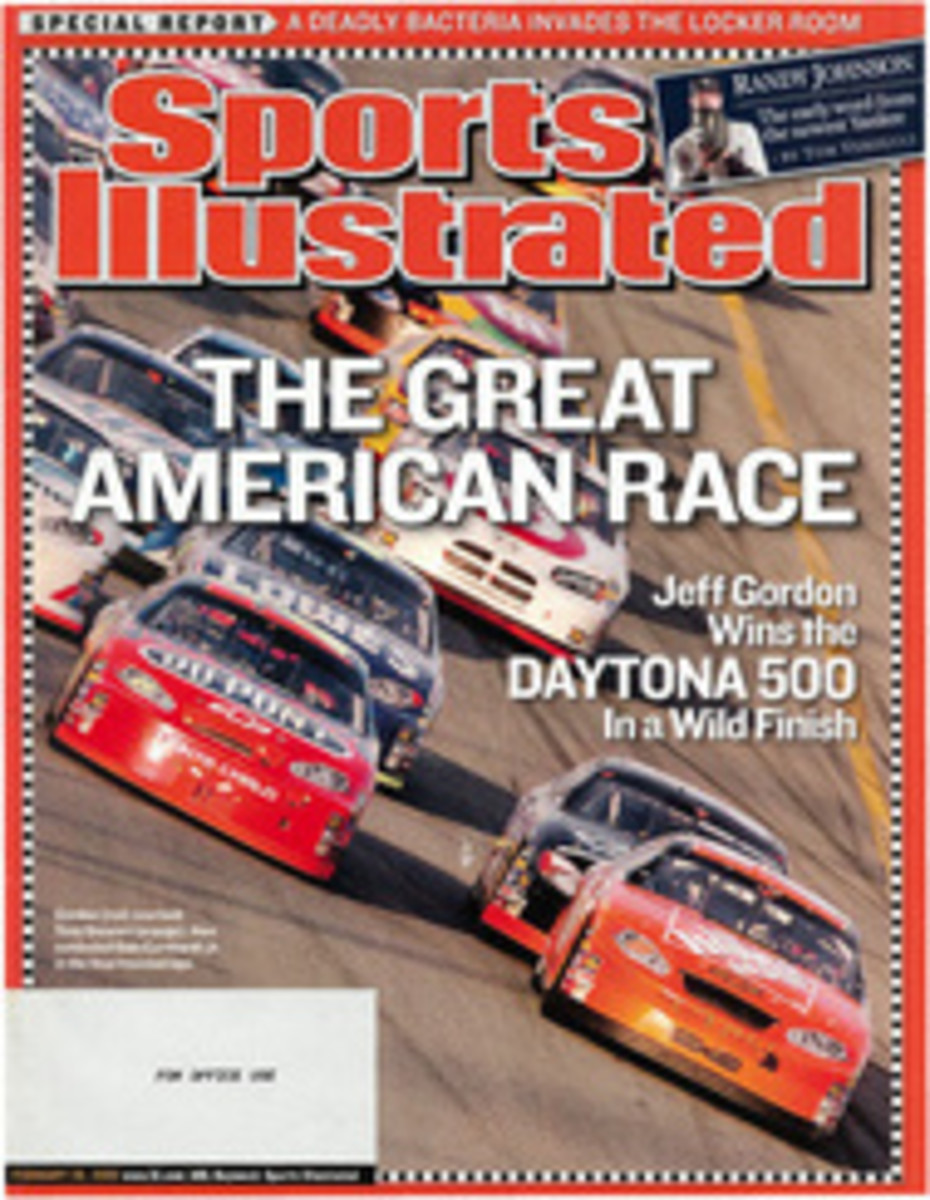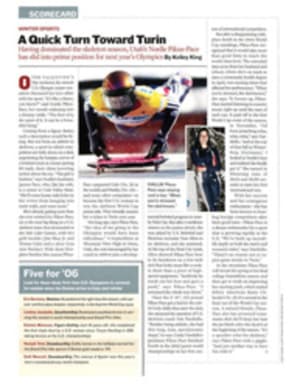
Chapter and Curse
Ralph Waldo Emerson said, "The artists must be sacrificed to their art." He had no idea how right he was. He never wrote a book about the Chicago Cubs.
I did. I chronicled the 2004 season in expectation of the Cubs' winning their first world championship since 1908 (Wrigley Blues, Taylor Trade, $16.95, 266 pages). As a lifelong fan of the team who grew up an El ride from Wrigley, I should have known better. The two most vivid memories of my four decades in Cubdom were watching in horror as World Series dreams slipped through Leon Durham's legs in the 1984 National League Championship Series, and watching in even greater horror as Steve Bartman appeared from the shadows and snatched defeat from the jaws of victory in the 2003 NLCS.
Last year things were supposed to be different. With talented young starters and off-season acquisitions such as Hall of Fame--bound pitcher Greg Maddux, Gold Glove first baseman Derrek Lee and ace reliever LaTroy Hawkins, the Cubs were the darlings of baseball. SI even picked them to win it all.
As expectations soared that spring, I landed my book deal. The working title, in a nod to the club's impressive pitching staff, was Armed and Dangerous. A Cubs fan could not have dreamed of a nobler calling. I would be there every step of the way as the Beloved finally reached the Promised Land.
I was there all right.
I was there at Wrigley Field in the arctic cold on April 12, expecting to watch the Cubs annihilate the lowly Pittsburgh Pirates in the home opener. Instead I saw Maddux, the long-lost Cub who'd left Chicago 11 years earlier to find glory in Atlanta, get shelled in a 13-2 loss, the team's worst home-opening defeat ever. It did not bode well for the season.
I was there at Wrigley in the searing heat on July 20, anticipating a valiant stand against the St. Louis Cardinals, who'd opened a nine-game lead over Chicago in the National League Central. Instead the Cubs lost, and Hawkins had to be restrained by five coaches when he went after home plate umpire Tim Tschida in the ninth inning, over his calls. In the clubhouse afterward I kept a safe distance from Hawkins as he sounded off: "You think I was going to hit him? I wasn't going to hit him."
I was there at Wrigley on the sweltering afternoon of Aug. 27, expecting the Cubs to knock the Houston Astros out of the National League wild-card race. Instead reliever Kyle Farnsworth gave up six runs in the top of the ninth, after which he kicked an electric fan in the clubhouse tunnel and injured his knee. The Cubs lost 15-7.
Some days I went to Wrigley simply to wax poetic about the beautiful old ballpark. Then pieces of concrete began falling from the upper deck. My luck was no better on the road. I was scheduled to fly to South Florida to watch the Cubs battle the Florida Marlins over the Labor Day weekend. But Hurricane Francis wiped out the series. My plane ticket wasn't refundable.
My Cubbies collapsed in the final week, losing five of their last six games to blow a one-game lead in the wild-card race. Still, though they had nothing left to play for, I was there at Wrigley for the season finale, expecting to watch them bow out with class and dignity. Instead team captain Sammy Sosa fittingly capped the year by leaving the stadium in the first inning.
Somewhere in the span from April to October the title of my book changed from Armed and Dangerous to Wrigley Blues. Over those fateful months my pie-in-the-sky romp to the World Series morphed into just another installment in baseball's longest, oddest tale of woe. Yeah, I got the story. But in doing so I left the biggest piece of my soul yet at the altar of Cubdom.
That, Ralph Waldo, was enough sacrifice for one lifetime. ■
Sick Start
As the Cubs stumbled through a 13-2 loss to the Pittsburgh Pirates in their home opener last year, preseason hopes met with stark reality on Chicago's North Side. The following is excerpted from Wrigley Blues.
By the eighth inning only the die-hards remained in the grandstands. Mullen's on Clark was getting more crowded with each pitch, but few people were fixated on the game anymore. One middle-aged man bought a round for his buddies and proposed a toast: "To Opening Day two thousand and ... whatever. What year is this?" No one had an answer.
It was now close to 4:30. Around this time each Opening Day, the Blue Flu [fans calling in "sick" to attend the game] was sometimes accompanied by vomiting, from a combination of beer and nine innings of Cubs baseball. In 2004 the symptoms were particularly acute.... The deejay at Mullen's, who must have put together his playlist before the opener, cued up the Thin Lizzy anthem The Boys Are Back in Town. All across Wrigleyville, Cubs fans were doubled over.
COLOR PHOTO
BILL BOYCE/AP (SOSA)
SLAMMED
As Sosa's star power faded, Wagner (inset) saw his book turn tragicomic.
COLOR PHOTO
CHRIS DOLAK (WAGNER)
COLOR PHOTO
ROWMAN & LITTLEFIELD PUBLISHING GROUP

